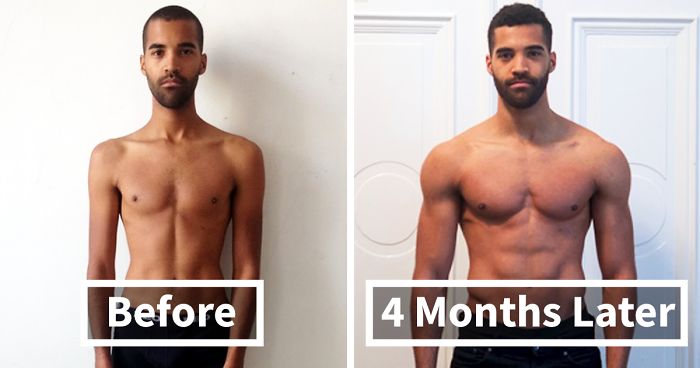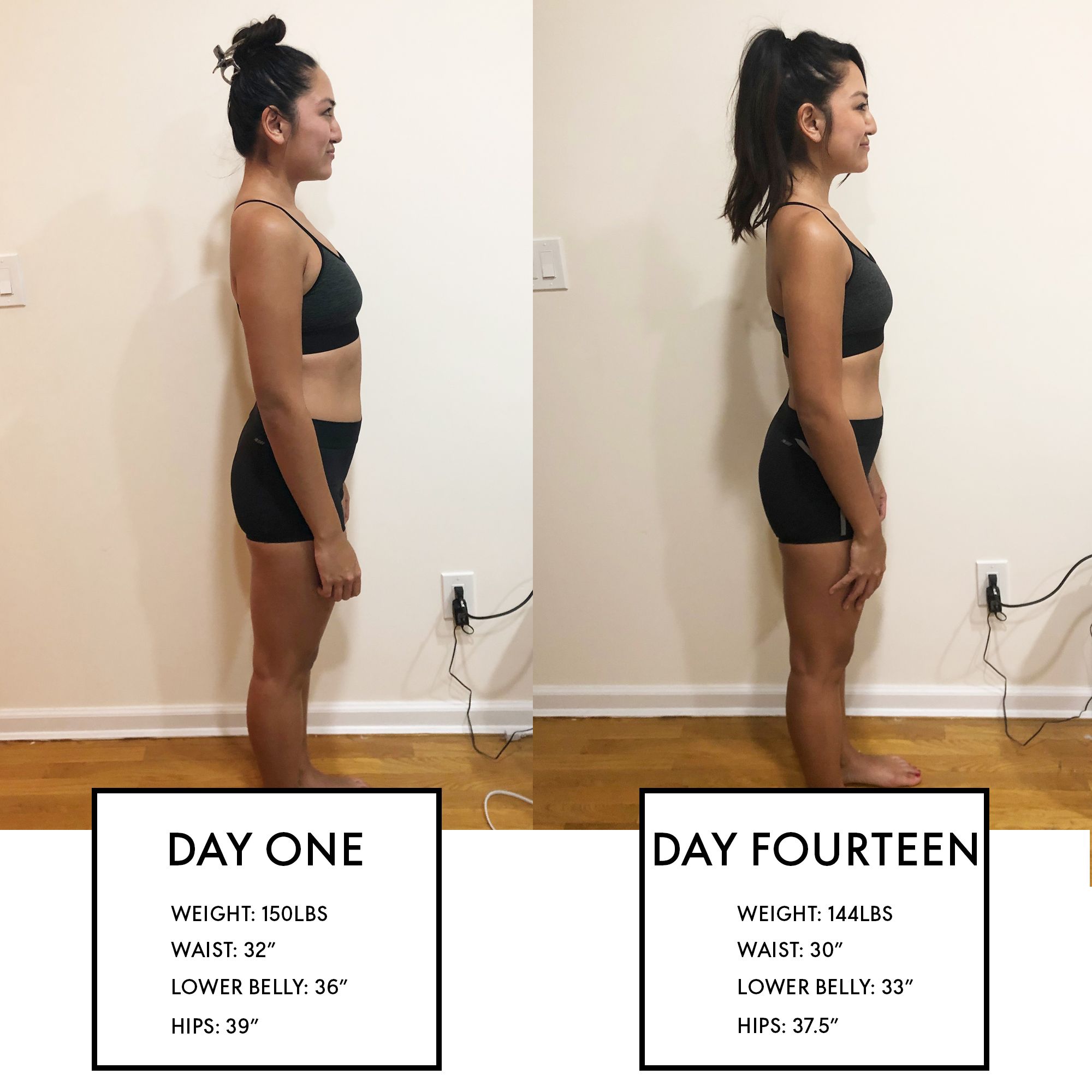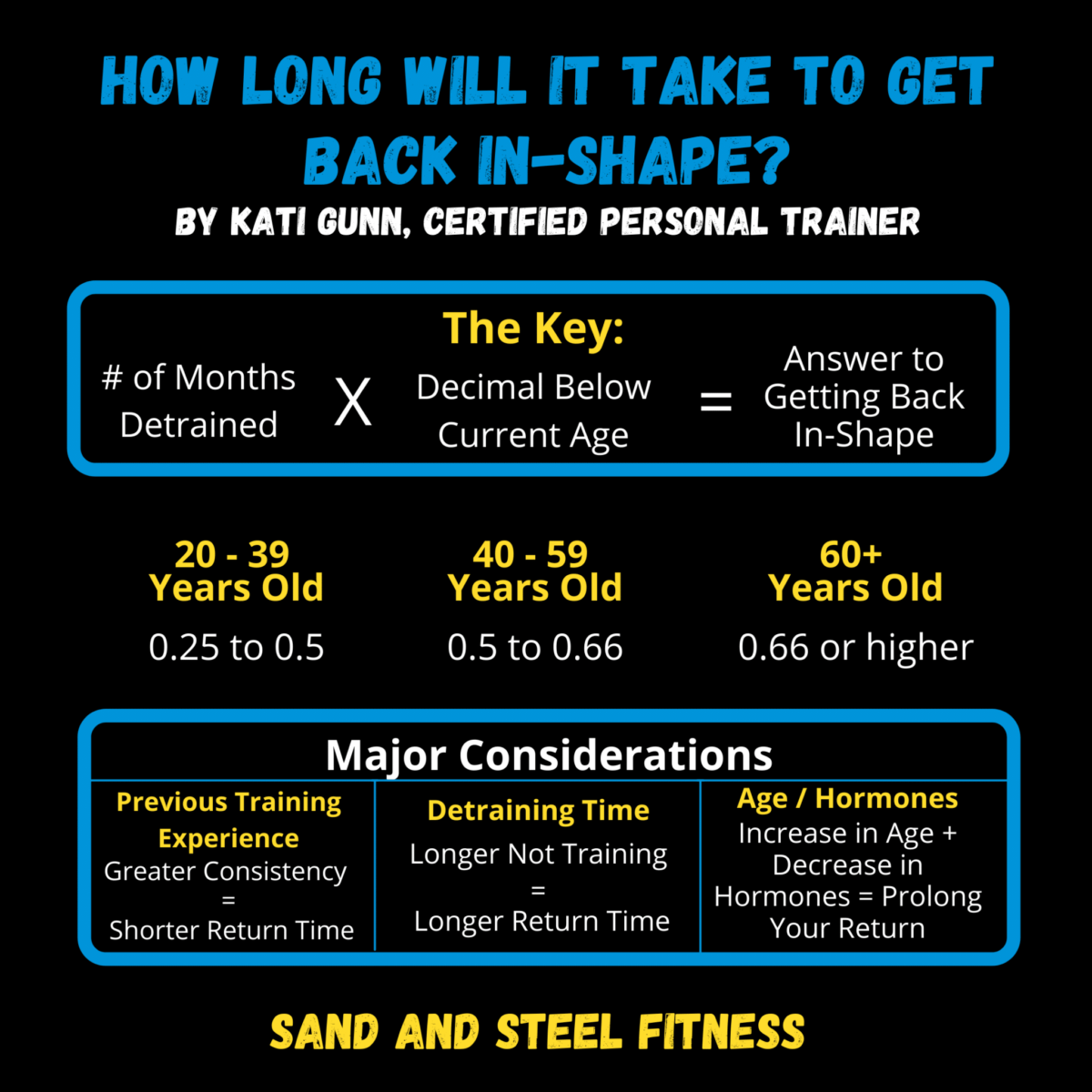 Fitness: How Long to Get in Shape
Fitness: How Long to Get in ShapeHow long does it take to get in shape? If you've ever been staring at night movies, you've probably seen commercial promising total body miracles. You know the guy. "Only 30 minutes of exercise a day, three times a week, and you could have a completely torn body in as little as six weeks." Sounds good, but the truth is there's no quick way to fit in. "If a gym, coach or class promises to make all your dreams come true in six weeks, run — don't walk — in the other direction," said Lisa Snow, president of , certified personal coach in New York. Even "natural" exercisers will not see miracles of fitness soon. "Some people seem to put the muscle at a rate much faster than others, although no one will look like Vin Diesel at night," said Justin Fauci, a certified personal trainer and co-founder of . If he doubts that six weeks is not enough to adapt, take a look at one of the researchers at the University of Wisconsin, La Crosse, who was published in The Journal of Strength and Conditioning Research. The researchers put a group of 25 sedentary men through a six-week exercise program, either three 20-minute cardiovascular sessions per week, or three 30-minute high-intensity training sessions. Yeah, it sounds a lot like those miraculous fitness ads. A group of panelists valued the appearance of men at the beginning and at the end of the photo-based study. After six weeks, the grades didn't change. Even men's grades of their own appearances were almost equal after six weeks. In addition, the objective signs of fitness—such as body fat percentage, the number of pulses and the efficiency of oxygen— did not improve during the study. So if six weeks isn't enough time to get fit, how long does it take? Time depends on the goals The answer to this fitness question depends, in part, on what you mean "in form. "How long it takes to see the results of fitness will vary depending on what your goals are," Eliza Kingsford, director of , told Healthline and author of "Brain-Powered Weight Loss". "Are you looking to improve time? Stronger? Losing body fat? The response to how long it will take to get in shape will vary for each of those objectives. " A beginner who wants to run a 5K race will take less time to get in shape than someone coaching for their first marathon or triathlon. And they'll need a different training program than someone preparing for a one-week backpack trip. In general, however, you will start to "feel" better long before you see the main results of fitness. "For someone who starts, I notice that in two weeks they can start feeling the benefits of exercise," said Jamie Logie, a personal trainer running, Healthline. This could mean being less breathless when you climb stairs or run to catch the subway. Or be able to play with your grandchildren in the backyard without getting tired. Although you might not have a "full body" yet, these little changes should not be discarded. "The mental benefits of being active are even more important than the external changes that we are all so worried about seeing," said Healthline Samantha Clayton, senior director of the Worldwide Fitness Education. This includes greater motivation and confidence to continue returning to your training until you begin to see physical benefits. "If you have been out of shape, or not working for 10 years — or forever — it will usually take about two months to work most of the days of the week to reach a moderate level," he told Healthline, headquartered in New York, Nikki Glor, video creator. And if you exercise regularly, eventually you will get even more fitness benefits. "At six to eight weeks you can definitely notice some changes," Logie said, "and in three to four months you can do a pretty good review of your health and fitness." Specific force results take about the same amount of time." For a client who is already in good cardio form but only wants to learn to lift weights safely, three months is usually a reasonable time," said Snow. So how long until you're deporting a "full body"? "If you're consistent with working and dieting properly for a full year, and you weren't significantly overweight to start," Fauci said, "then after a year you can expect to practice a magic and muscled physicist with a visible six pack." How to fit in to compete Not everyone likes to be fit only for the sake of getting fit. For them, there are any number of outdoor racing to choose: 5K or 10K racing, marathons, half marathon or 100-mile bike rides. There are also triathlons, hard mudders, super spartans and other obstacle races for people who like the variety. With this type of specific fitness goal, it is even more important not to rush into shape. "If you're getting ready for an event or career, please get ready," said Healthline James Shapiro, a certified personal trainer based in New York. "If you plan to participate in a resistance event like the Spartan race and you have never traveled five miles, it's time to start three to four months before. Our bodies are strengthened, but you want to go through the finish line, don't drag to get there." There are many training programs to help you get fit for these races, but expect to spend at least two months in the pre-run training, looking at miles from three to six days each week. That extra time will be worth it, especially for beginners. In a European Journal of Applied Physiology, researchers put a group of untrained adults through a nine-month marathon training program and full duration. At the end of the study, the program's people had increased their cardiovascular fitness — VO2 max — by 24 percent, and their operating speed by 29 percent. Even if you prefer non-competitive outdoor activities such as backpacking, kayaking or mountain biking, you expect to put on solid miles to get fit." We found that it takes about four to five full days of backpack to enter in the form of hiking," said Healthline Steve Silberberg, owner of Massachusetts. These are full eight-hour days, back to back, with a fully loaded package. It may sound daunting, but many beginners have walked this way before. "Many people can get out of the sofa and start grinding," Silberberg said. "The second day is the most difficult because the enthusiasm of the first day has awakened and you already have painful feet and muscles." Factors affecting physical fitness These, of course, are general guidelines. Many things along the way can accelerate or slow down their progress. "The right thing that you are when you start is a factor that I have personally seen affects people's individual results time," Clayton said. The type of exercise you choose also matters and will affect you differently if you are a beginner or if you get out of a disease or injury. "If you don't feel comfortable with exercise, or maybe you're being cautious because of an injury, you're going to get different walking results for 90 minutes per day that someone who is already used to exercising and decided to test a HIIT program [high intensity interval training]," Kingsford said. Beginners, however, can progress faster simply because they are starting to lower the fitness ladder and require less exercise to challenge their body. "The beginners see huge leaps in force through the board every week with the right training," Fauci said. Of course, what you put in an exercise program also determines what you get from it. On a perceived scale of effort from one to 10, "if you just feel comfortable exercising at a level six, you will get different results that someone who is comfortable exercising at a level nine," Kingsford said. In a Journal of the American Medical Association, researchers placed sedentary, overweight or obese women in three groups, exercising 50 percent, 100 percent, or 150 percent of the recommended energy spending level. Women who worked at the highest level saw an improvement of 8% in their cardiovascular state after six months. Those at the lowest level of intensity saw a 4 percent increase in fitness. An 8 percent increase in fitness doesn't seem much, but if you've been inactive for a long time, it can be huge. If you accumulate the intensity even more, you will get faster results. "We see the results of our students' fitness in about two weeks," said Tina Angelotti, fitness director of , Healthline. "Our students work at very high levels of intensity in our self-defense, fitness and Krav Maga fighting classes. " If you are a beginner, or new to more intense exercises, you may need to work up to this level. "If you work too soon, you run the risk of injury or stress renouncing," Clayton said. "But if you don't work hard enough, you won't see results. So find your balance and know that healthy and proper is not a race or a destination." Getting out of shape Once your exercise routine becomes a habit, you probably find it easier to stay with it. But an injury, illness or even life can easily derail your training. "The circumstances of life will always kick you out of your plan at some point," Rob Williams, coach and performance coach for, "but the most important thing is to get back to your program and be on it in the long run." Often, cardiovascular fitness is the first to go. "If you are highly trained and decide to take a break from the exercise, your heart will be the first and fastest to refuse. It will fall significantly after just a few weeks of inactivity," said Healthline Tyler Spraul, a certified resistance and conditioning specialist and the main coach. According to physiological changes, such as blood lipoproteins, the ability to use glucose for energy and body composition can occur one or two weeks after you stop exercising. A in the Journal of Applied Physiology: Respiratory, Environmental and Exercise Physiology also found that when resistance athletes stopped training, their VO2 max fell by 7 percent within the first 21 days of inactivity. This stabilized after 56 days without exercise. And after 84 days of inactivity, athletes still had a VO2 greater than the people who had never trained. Muscle strength can last longer during a break. A in Medicine and Science in Sports and Exercises found that young people lost only 8 percent of their strength after 31 weeks of inactivity. Older people lost 14 percent of their strength during that time. Most of the loss of force occurred between 12 and 31 weeks. Even small breaks may not affect your progress of global force. In a study of Clinical Physiology and Functional Images, beginners who took a three-week break in the middle of a 15-week bank press program achieved similar results at the end of the study as beginners who worked the whole way. So once you build a force base, stay with you. When subjected to resistance training, you permanently change the physiology of your muscle cells, even if you stop training for long periods of time," Fauci said. "This makes the process of regaining strength and size after a long rest of the gym much faster." This is equally true for general fitness. "Everyone will be different when it comes to seeing results after a break from work," Williams said, "But the longer and more consistent you've been working and training, the less an impact will have a break on you." Minimization of losses during interruptions The good news is that you can minimize fitness losses during a break by continuing to exercise at some level, even if it is less than you did before. According to ACSM, you can maintain your current level of strength, performance and health benefits with "as little as a single session per week of moderate to hard intensity exercise." Whatever you choose to take a break depends on your circumstances. If you stopped exercising because life got in the way, you may have to tighten your physical activity wherever possible, do body weight resistance exercises all day, take the stairs instead of the lift, or bike to work. If you are injured, you may have to modify your training significantly. "I encourage students who take care of an injury, depending on the severity of the injury, to continue coming and training, but we obviously modify their training around the injured body," Angelotti said. "For example, a student with shoulder injury can still come and work his lower body so they don't completely disinfect." It is also important to work with a doctor or a physical therapist to develop a program that will keep you active, but still allow your body to heal. People who come back from an injury also "need to learn to trust the injured joint again," Snow said. "The effort on the uninjured side for months or years after graduating from therapy only increases the risk of a new injury elsewhere in the body. " If you have been inactive for several weeks, it is often safer to start again — working with your current level of fitness and health, not where you were before the break. And for that, you'll need a lot of patience, the class that put you in shape in the first place. "After giving birth to my first child, it took me four months to come back and after triplets it took me 18 months," Clayton said. "Everything is one step at a time and allows your body to adapt slowly, this is often the best and most sustainable approach." By Shawn Radcliffe He was published in .
Accessibility Links Search results How long does it take to get to the Moon? - Universe Today How long does it take to get a tattoo? - TatRing - Tattoos How long does it take to get to Mars? - Universe Today How long does it take to get published? - How long does it take to get out of your system my legs... how long does it take to get to Jupiter? - Universe Today How long does it take to get your asteroid Equivalence? How long does it take to get to Pluto? - Universe Today How long does it take to get an anthropology or archaeology? Foot links

How Long Does It Take To Get In Shape: Top Tips To Help You Today!
How Long It Actually Takes To Get In Shape For Summer | HuffPost Australia Life
How Long Does It Take to Get In Shape? | Bieman Fitness' Portfolio
Tips and Articles | Personal Trainer Selby
Fitness: How Long to Get in Shape
97 Unbelievable Before & After Fitness Transformations Show How Long It Took People To Get In Shape | Bored Panda/arc-anglerfish-tgam-prod-tgam.s3.amazonaws.com/public/JL6WUQE46ZANHAW2FWJUPXPWFE)
How long does it take to get 'fit'? - The Globe and Mail
workout Archives - RunnerSquare
How to Get in Shape in Two Weeks - Two Week Workout
How Long Does It Take To Get Into Shape And How Should You Go About It?
How Long Does It Take to Get in Shape? | LoveToKnow
Top Muscle Building Exercises Infographic | Muscle building workouts, Fitness body, Workout routine
The Detraining Effect: How Long Does It Take to Get Out of Shape?
How Long Does It Take To Get In Shape: 100% Working - SecondWiki
How Long Does It Take To Get In Shape? - Health Aegis
Pin on Lose Weight, Cellulite and Love Handles
How Long Does It Take to Get in Shape After Living a Sedentary Lifestyle? - Flab Fix
From Flab To Fit: How I Got Into Fitness Model Shape In 90 Days - The Rise to the Top
How Long Does It Take To Get In Shape: Top Tips To Help You Today!
How Long Does it Take to Get In Shape? Explanation with Victor Costa from Vicsnatural - YouTube
How Long Does It Take To Get In Shape: Top Tips To Help You Today!
How Long Does it Take to Get Back In Shape? - Sand and Steel Fitness
How long does it take to get a six pack? - Quora
How Long Does It Take to Get Out of Shape?
Fitness: How Long to Get in Shape
How Long Does It Take To Get In Shape: Top Tips To Help You Today!
How long does it take to get in shape? - YouTube
How Long Does It Take To Get In Shape? - Health Aegis
How Long Does It Take To Get Into Shape And How Should You Go About It? | Get in shape, Muscle gain workout, Arm workout
How Long Does It Take to Get Out of Shape?
How Long Does It Take To Get In Shape? - Health Aegis
How Long Does it take to Get in Shape? - Arkitect Fitness
How Long Does It Take To Get Into Shape And How Should You Go About It?
How Long Does It Take To Get In Shape: Top Tips To Help You Today!
How Long Does It Take to Get Out of Shape? - LHSFNA
How Long Does It Take To Get In Shape: Top Tips To Help You Today!
How to get fit when you're feeling unfit
How long does it take to get in shape for hiking? — Miss Adventure Pants
How Long Does It Take to Get Out of Shape? | How Long Does It Take to Lose Fitness?
How Long Does It Really Take to Get Out of Shape? | The Active Times
 Fitness: How Long to Get in Shape
Fitness: How Long to Get in Shape




/arc-anglerfish-tgam-prod-tgam.s3.amazonaws.com/public/JL6WUQE46ZANHAW2FWJUPXPWFE)






























Posting Komentar untuk "how long does it take to get in shape"